This post may contain affiliate links. As an Amazon Influencer, I earn from qualifying purchases.
Gluten Free Vegan Pie Crust provides a beautiful canvas for any pie, sweet or savory. This almond flour pie crust is the best healthy, low-carb recipe!
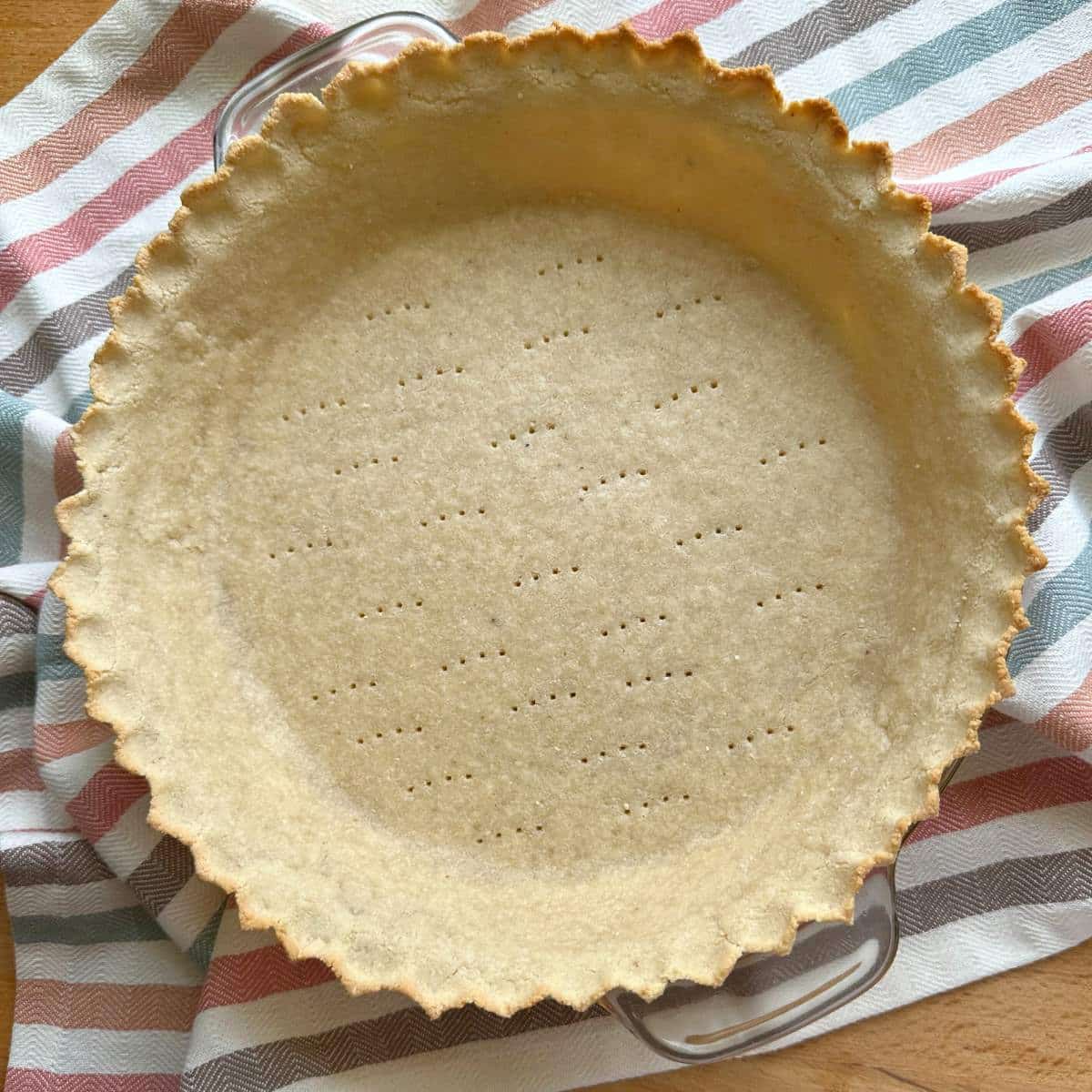
Having the perfect pie crust is the key to a GREAT pie.
It’s easy to follow a recipe for a pie filling and make a delicious-tasting pie. But a pie crust can be tricky. It's even harder to make it gluten-free and vegan.
Well, look no further. This is just the recipe for you!
Let me tell you, this gluten free pie crust recipe does not disappoint! You will be instantly hooked when you smell it from the oven and have your first bite.
It feels great to share a delicious treat with friends or family that everyone can enjoy. That is what this almond flour pie crust recipe is for!
The texture isn't quite the same as the flaky crust from a traditional pie. Instead, it has a perfectly light yet crisp texture to add contrast to a silky smooth pie.
A vegan pumpkin pie or sweet potato pie pair perfectly against this crispy gluten-free crust. Dollop with coconut whipped cream for an extra decadent treat!
Or double the recipe and use your favorite veggie pot pie filling!
No matter what you make, there is no wrong way to enjoy this crust!
Here are some other reasons you will love this pie crust!
- It only takes 5 simple ingredients to make.
- It has no egg, no dairy, no gluten, no oil, no grain, and no xanthan gum.
- It is healthy and low-carb as compared to traditional pie crusts.
- It is low in sugar and can be made without sugar for a savory pie!
- It can be made in under 15 minutes! Super quick and easy for any last-minute dessert emergencies.
- It is crisp, delicious, and versatile, great for sweet and savory pie fillings.
Ingredients
You'll need these 5 simple ingredients for this vegan and gluten-free pie crust recipe:
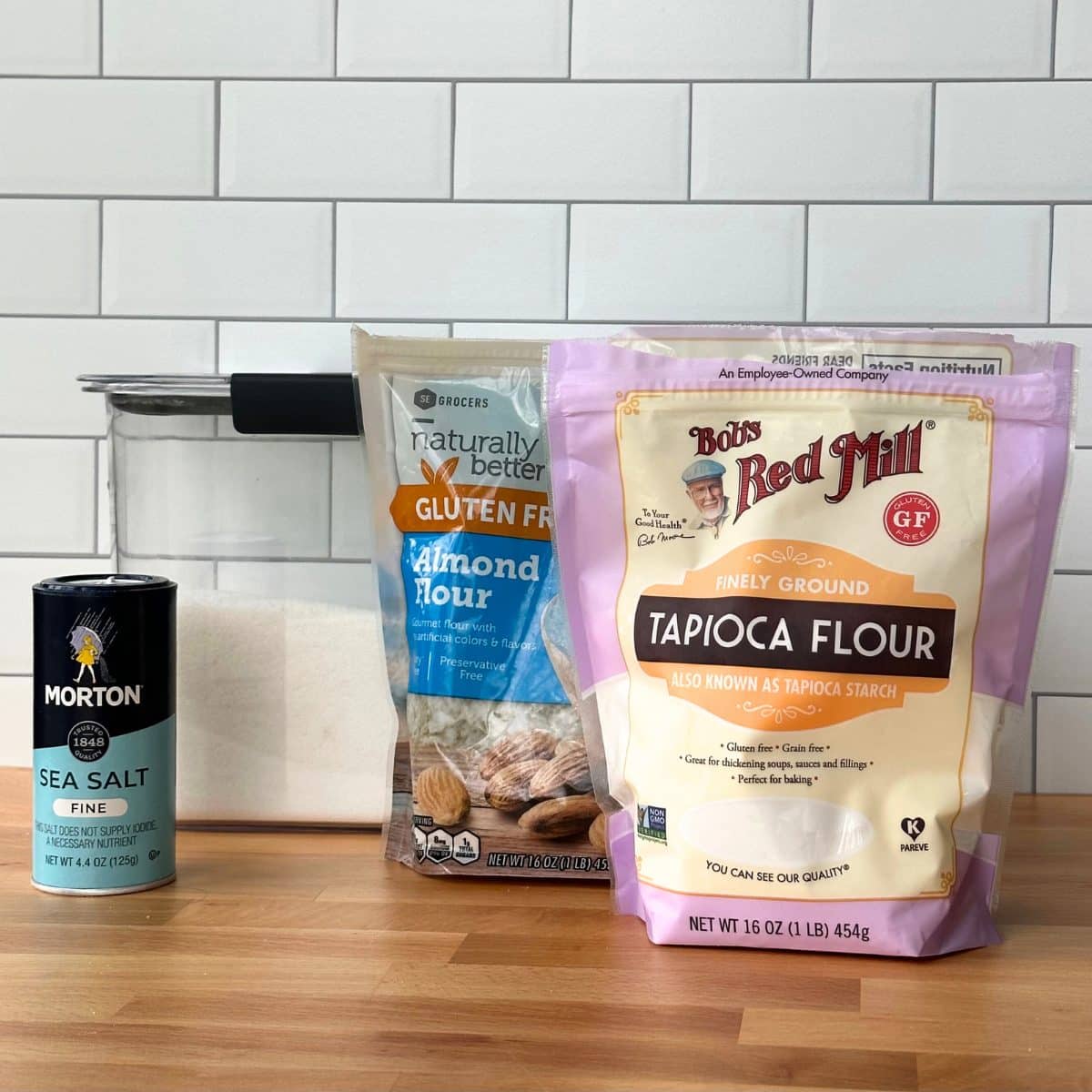
- Almond Flour - The best type of flour when making gluten-free pies to ensure a crisp low-carb crust! 1:1 gluten-free flour blend results in a dense dough. It is easy to make almond flour with our how-to recipe!
- Tapioca Starch - Also known as tapioca flour. This addition to the almond flour helps to improve the overall texture and flavor.
- Fine Sea Salt - Adds to the overall flavor. Double the amount for a savory pie.
- Granulated Sugar - White or coconut sugar will work. Omit if making a savory dish.
- Water - Is used to hold together the dough instead of oil, butter, or vegetable shortening. Makes the dough very flexible and forgiving. You also won't have to worry about keeping your ingredients cold while working with the dough.
Despite having no vegan butter or coconut oil, the crust doesn’t stick to the pie dish and still has a delicious buttery flavor! There must be some magic in the almond flour and tapioca starch combo. 😉
Please refer to the recipe card below for the full list of ingredients and detailed instructions.
Equipment
To make gluten free vegan pie crust, you will need this equipment:
- Pie Pan - You will need an 8” or 9” pie plate, tin, dish, or pan.
- The diameter from the inside top edge of the pan should measure 8”, 9”, or 9.5”. If any larger, you may not have enough dough and should increase the recipe.
- The diameter of the inside bottom of the pan will be smaller, around 7” to 8”.
- The 9" pie pan is the standard for most pie recipes.
- Parchment paper - A must to roll out the dough! Since this gluten-free recipe uses almond flour, flouring the surface before rolling isn't recommended! 😂 Sandwiching the dough between two sheets of parchment ensures that it won't stick to your rolling pin or counter. Also, it allows for a quick and easy cleanup!
- Rolling pin - A rolling pin helps achieve the pie crust's desired thickness and finish. However, it is not required, and you could press the dough directly into the pie pan.
- Large Bowl - Super easy to mix in a large bowl, no need for a food processor or stand mixer!
Directions with Pictures
Here's a step-by-step guide on how to make gluten free vegan pie crust:
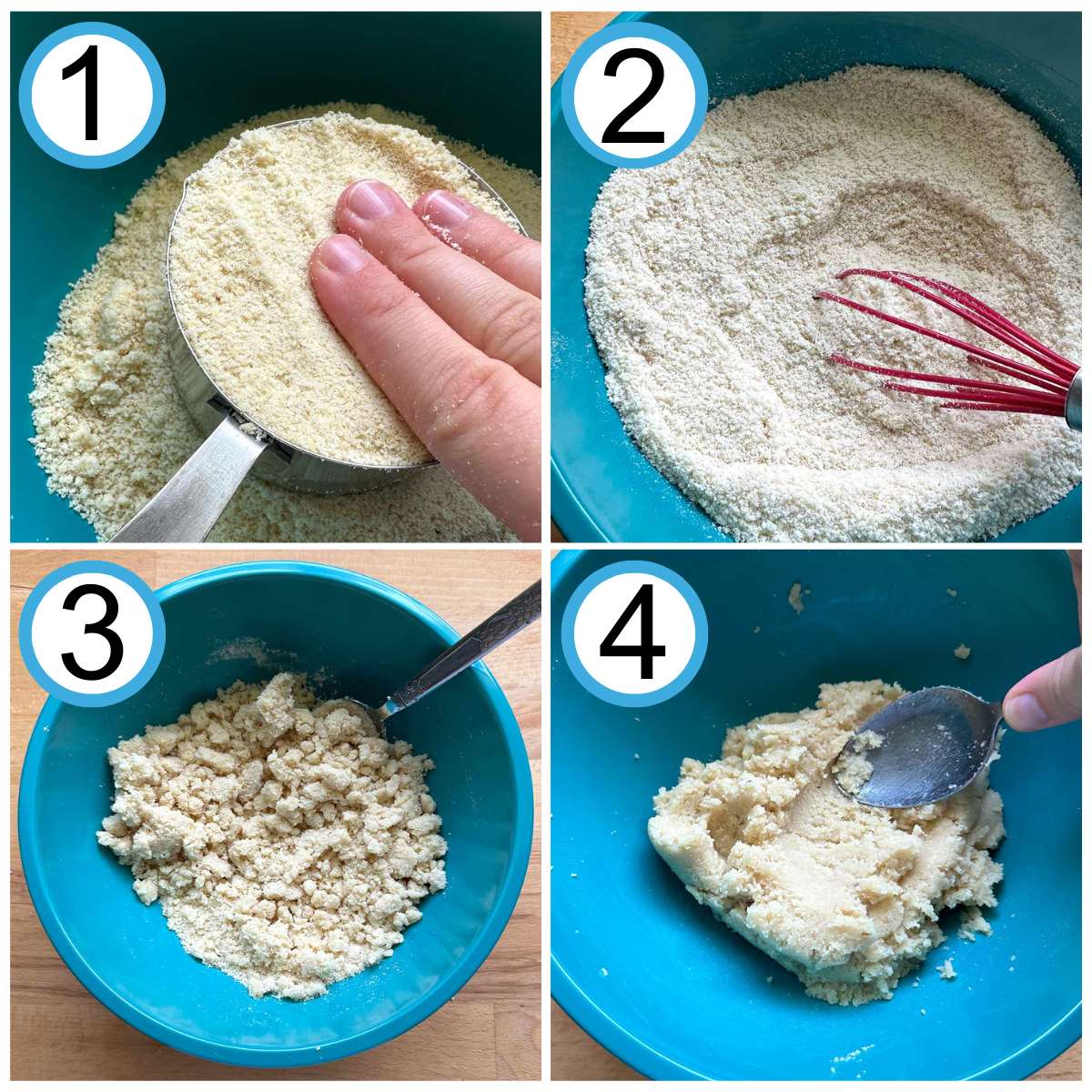
- Measure almond flour as you would brown sugar, lightly packing it. Measure the remaining ingredients as usual.
- Whisk together dry ingredients in a large bowl.
- Slowly add water to dry ingredients and stir, starting with ¼ cup. The dough will look crumbly at first.
- Continue to add 1 tablespoon of water at a time and mix. Only add as much water as needed to create a moist dough that can be pressed into a ball that will hold. You can use your hands to combine if needed.
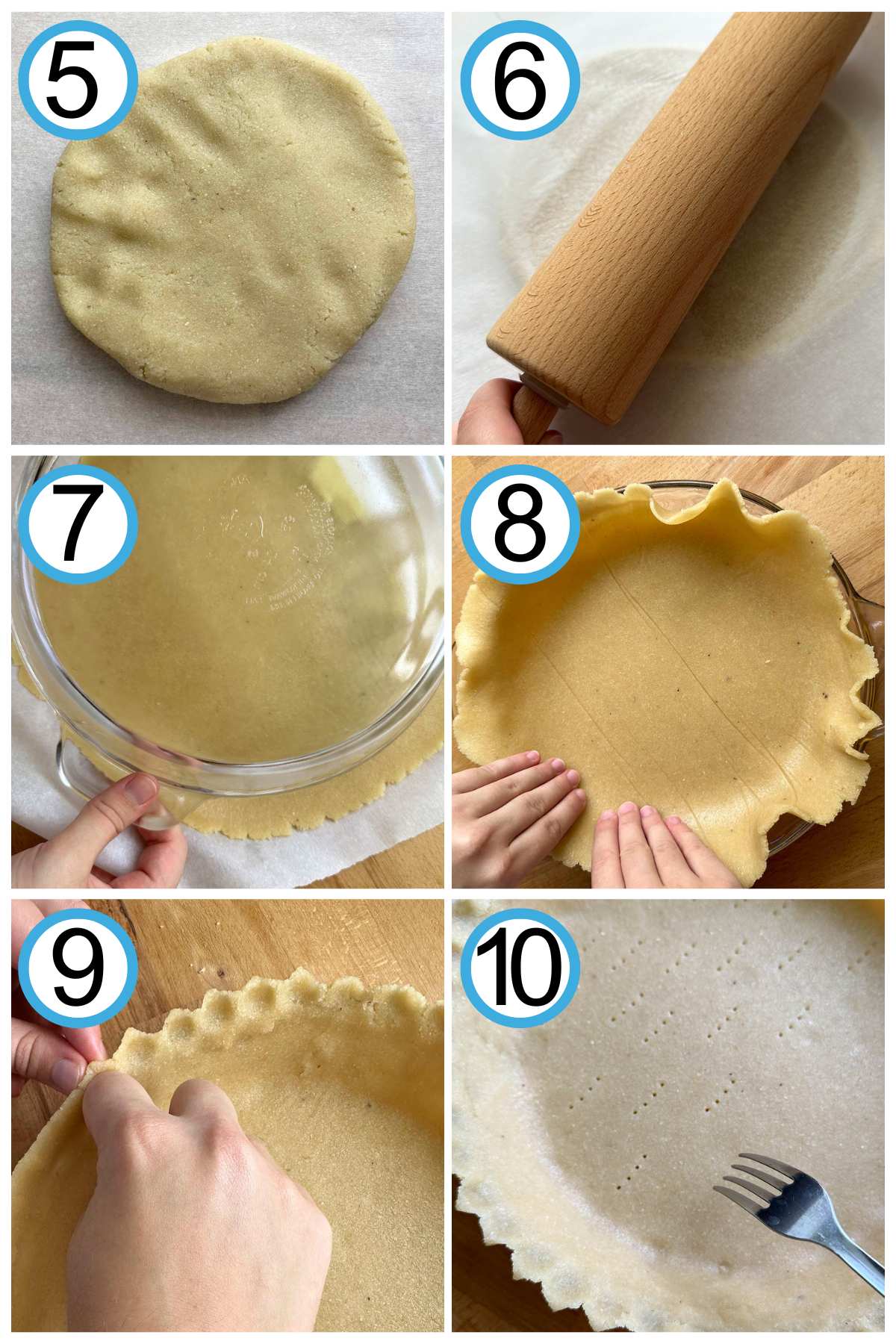
- Place the dough ball on a piece of parchment paper. Flatten the ball with your hands into a disc.
- Cover the dough disc with another sheet of parchment paper. Using a rolling pin, roll the dough to about ⅛” thick.
- Too thick, and the crust won’t cook all the way through. Too thin, and the dough can rip or tear. ⅛” is just the right balance.
- Once the dough is an ⅛” thick, trim excess dough so the crust has a diameter of 12”.
- Transfer the dough from the parchment sheet to the pie pan. Be gentle as you peel away the parchment. If there are any holes or tears, they can be easily repaired by adding excess dough.
- Gently press it into the pie pan to fit snugly against all sides. Try not to stretch or tear the dough. You want the thickness to remain ⅛” for an even bake.
- Finish by decorating the edges as you please. The knuckle crimp method works well for pies that do not have other decorations on top.
- Dock the pie crust by poking holes in the bottom using a fork. Docking lets steam escape while the crust bakes.
Baking Instructions
Depending on what pie recipe you are making, there are 3 options for baking your gluten-free vegan pie crust:
- Unbaked - Best for pies with a long baking time, over 45 minutes, and in the oven at high temperature. Just add the pie filling and bake according to its recipe instructions.
- Parbaked - Best for pies with a short to medium baking time. Also helpful for pies with a very liquidy filling to ensure there isn’t a soggy bottom. Bake at 350°F for 8 to 10 minutes. The crust will be aromatic and turn a light golden brown color.
- If the recipe calls for a blind bake, you don't have to line it with foil and put pie weights on it. This crust does not shrink or puff up because it is gluten-free.
- Fully Baked - Best for pies with no-bake filling or very short baking time. Bake at 350°F for 30 minutes or until golden.
- If the edges start browning too much before the pie is done, use a pie shield or wrap aluminum foil around the edges to prevent further browning. This is especially important if the edges have a decorative finish.
Ways to Use Gluten Free Pie Crust
There are so many ways to customize this vegan pie crust recipe. Be creative!
- The obvious choice is to make a homemade pie! Sweet potato pie, pecan pie, and pumpkin pie all pair perfectly with this almond flour crust.
- Omit the sugar, double the recipe, and use it for your favorite veggie pot pie or another double-crust pie.
- Cut out little circles from the rolled-out pie dough and cook in a muffin tin to make mini pies for easy serving and instant portion control!
- Bake in a tart tin for a beautifully crisp and gluten-free tart crust.
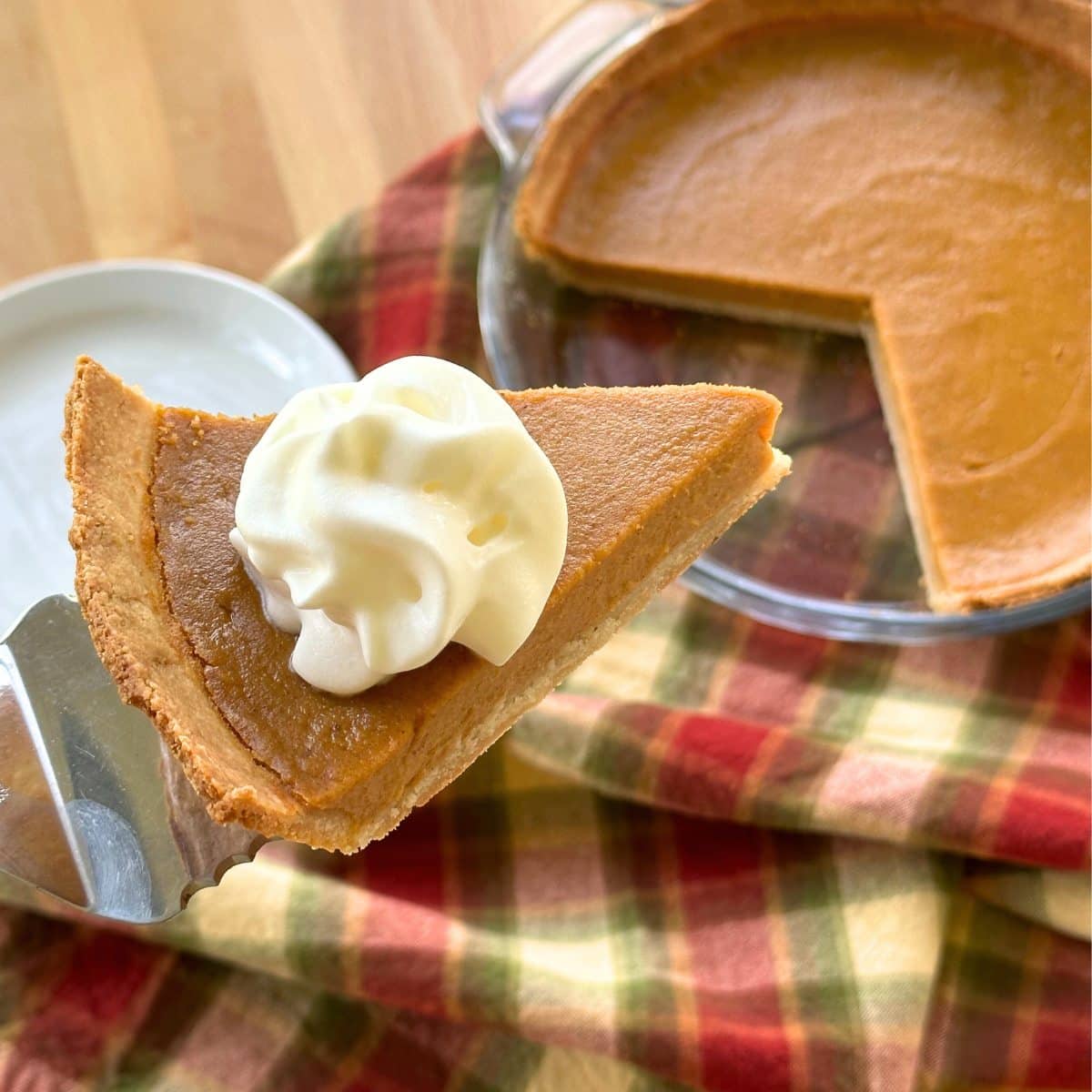
Storage
If premaking the dough and baking later, wrap it with plastic and store it in the refrigerator for up to 3 days.
Similarly, if making the dough ahead and freezing, wrap it in plastic wrap. Thaw in the refrigerator overnight before using.
If parbaking or fully baking, you can store the baked crust on your kitchen counter for a few hours before adding the filling. I recommend doing this anyway to allow the crust to cool.
FAQ
You may not be using the right flour blend! This recipe uses a combination of almond and tapioca to ensure a crispy crust that holds its form.
Yes! Cassava is quite similar to tapioca starch or flour. They actually come from the same plant! Tapioca only uses the pulp of the yuca or cassava plant, making it starchier. Cassava uses the entire root.
Cassava has more fiber which also gives it more thickening power.
I recommend tapioca over cassava because it has a finer texture and will ensure a smooth pie crust.
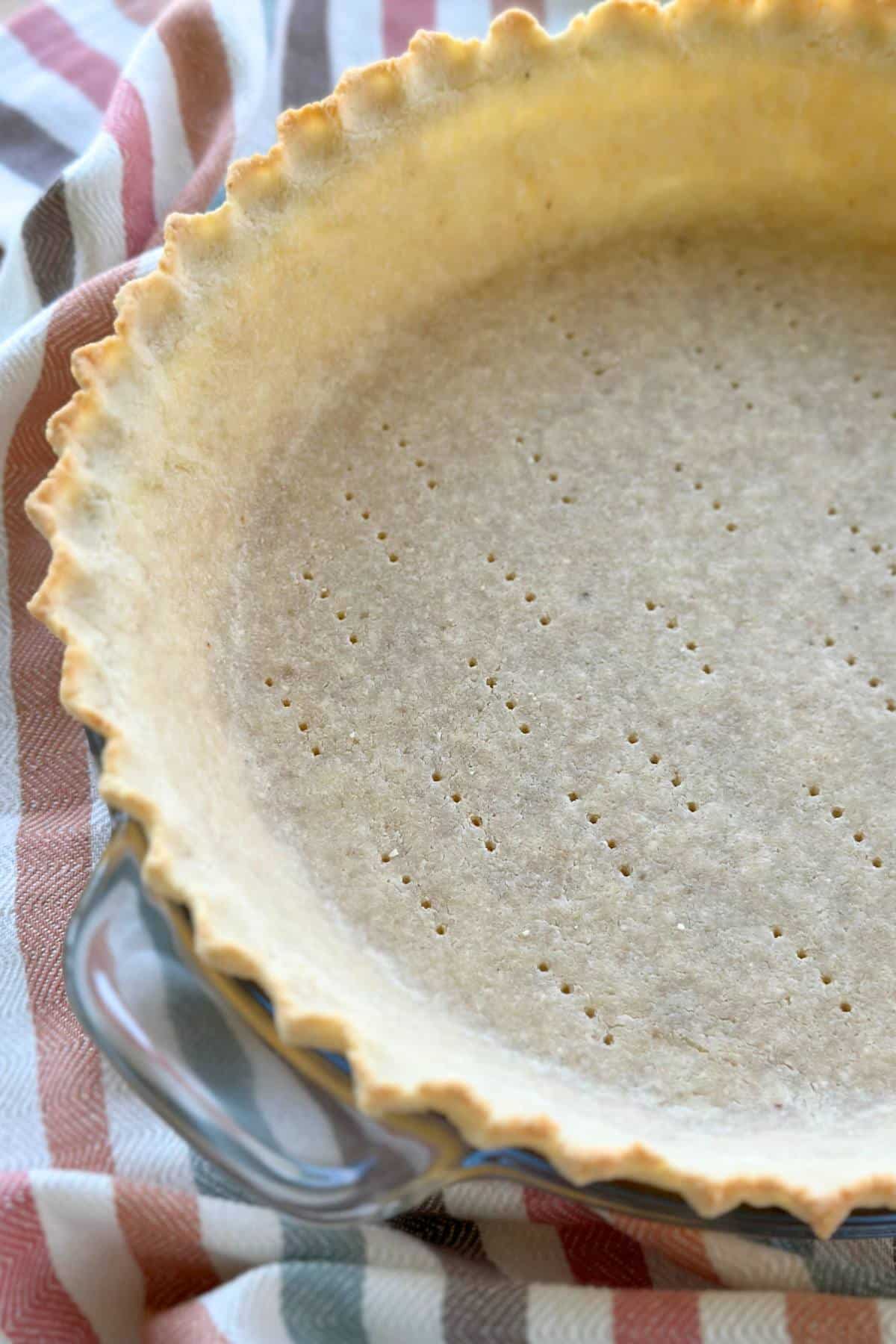
Our Favorite Pie Recipes
Here are some pie recipes that work great with this almond flour crust!
Did you make this recipe?
Please leave a rating and tell us how you liked it!
📖 Recipe
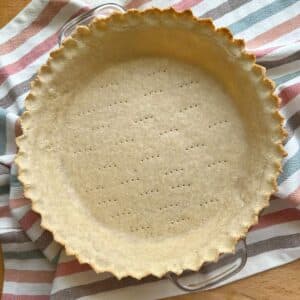
Gluten Free Vegan Pie Crust
Equipment
- 8" or 9" pie pan
Ingredients
- 1 ¾ cup (196 grams) almond flour other gluten-free flours are not recommended to substitute
- ⅓ cup (40 grams) tapioca starch or cassava flour
- ¼ teaspoon fine sea salt ½ teaspoon for savory pie
- 1 tablespoon granulated white sugar omit for a savory pie
- 5 tablespoons water more if needed
Instructions
- Whisk together dry ingredients in a large bowl.
- Slowly add water to dry ingredients and stir, starting with ¼ cup. The dough will look crumbly at first.
- Continue to add 1 tablespoon of water at a time and mix. Only add as much water as needed to create a moist dough that can be pressed into a ball that will hold. You can use your hands to combine if needed.
- Place the dough ball on a sheet of parchment paper. Flatten the ball with your hands into a disc.
- Cover the disc with another sheet of parchment paper. Using a rolling pin, roll the dough to about ⅛” thick.
- Trim excess dough so the crust has a diameter of 12”.
- Transfer the dough from the parchment sheet to the pie pan. Be gentle as you peel away the parchment. If there are any holes or tears, they can be easily repaired by adding excess dough.
- Gently press it into the pie pan to fit snugly against all sides. Try not to stretch or tear the dough. You want the thickness to remain ⅛” for an even bake.
- Finish by decorating the edges as you please. The knuckle crimp method works well for pies that do not have other decorations on top.
- Dock the pie crust by poking holes in the bottom using a fork. Docking lets steam escape while the crust bakes.
- If parbaking: Bake at 350°F for 10 minutes. If fully baking: Bake at 350°F for 30 minutes. Place aluminum foil or a pie shield on the edges of the crust so they don't burn.
Notes
- Measure almond flour as you would brown sugar, lightly packing it. Measure the remaining ingredients as usual.
- Other gluten-free flour is not recommended to substitute almond flour.
- Almond flour is also sometimes called almond meal.
- Tapioca starch can be substituted for cassava flour if needed, but this may result in a grittier texture.
- Instead of rolling out the dough, you could press it directly into the pie dish.
- Use aluminum or a pie shield to protect crimped edges when baking. This crust browns a bit faster than regular pie crusts.
- If making Savory Pie- Omit the sugar and use ½ teaspoon of salt.
- If making a lattice or pie that requires a top crust, double the recipe.
- Unbaked - Best for pies with a long baking time, over 45 minutes, and in the oven at high temperature. Just add the pie filling and bake according to its recipe instructions.
- Parbaked - Best for pies with a short to medium baking time. Also helpful for pies with a very liquidy filling to ensure there isn’t a soggy bottom. Bake at 350°F for 8 to 10 minutes. The crust will be aromatic and turn a light golden color.
- If the recipe calls for bling baking, you don't have to line it with foil and put pie weights on it. This crust does not shrink or puff up because it is gluten-free.
- Fully Baked - Best for pies with no-bake filling or very short baking time. Bake at 350°F for 30 minutes or until golden.
- If the edges start browning too much before the pie is done, use a pie shield or wrap aluminum foil around the edges to prevent further browning. This is especially important if the edges have a decorative finish.
- If premaking the dough and baking later, wrap it with plastic and store it in the refrigerator for up to 3 days.
- Similarly, if making the dough ahead and freezing, wrap it in plastic wrap. Thaw in the refrigerator overnight before using.
- If parbaking or fully baking, you can store the baked crust on your kitchen counter for a few hours before adding the filling. I recommend doing this anyway to allow the crust to cool.
Nutrition
This recipe has been updated with new pictures and tips. It was adapted from Maggie's recipe that was posted on July 30, 2019.


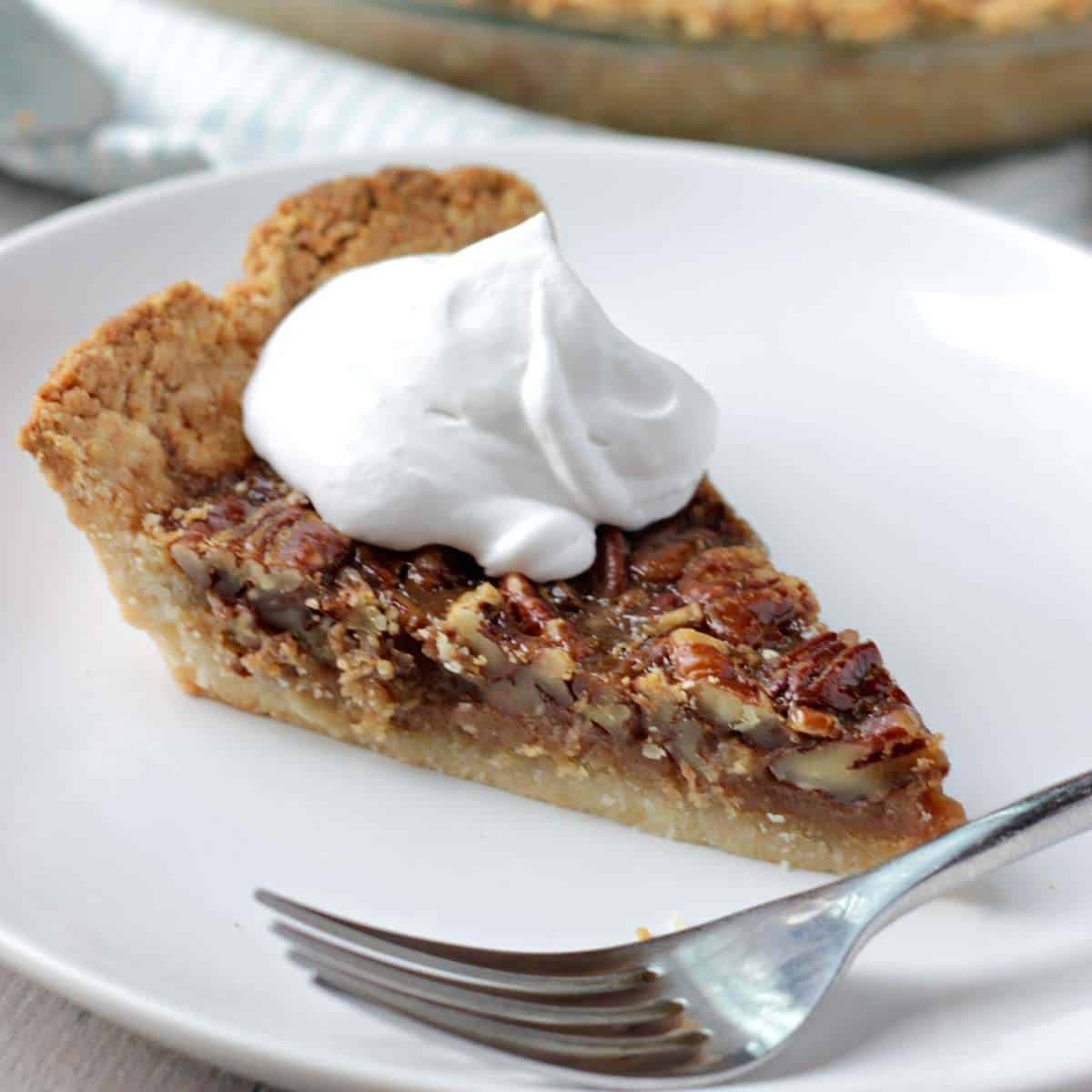



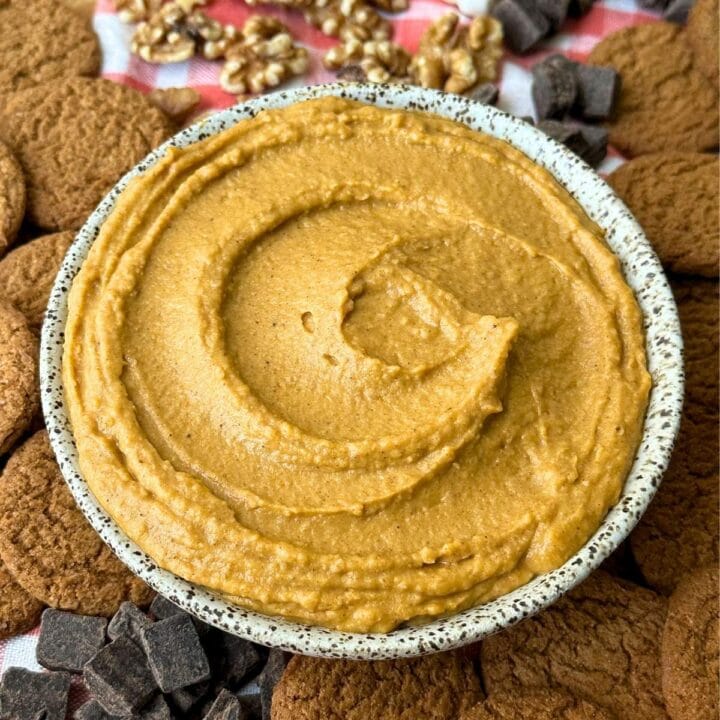
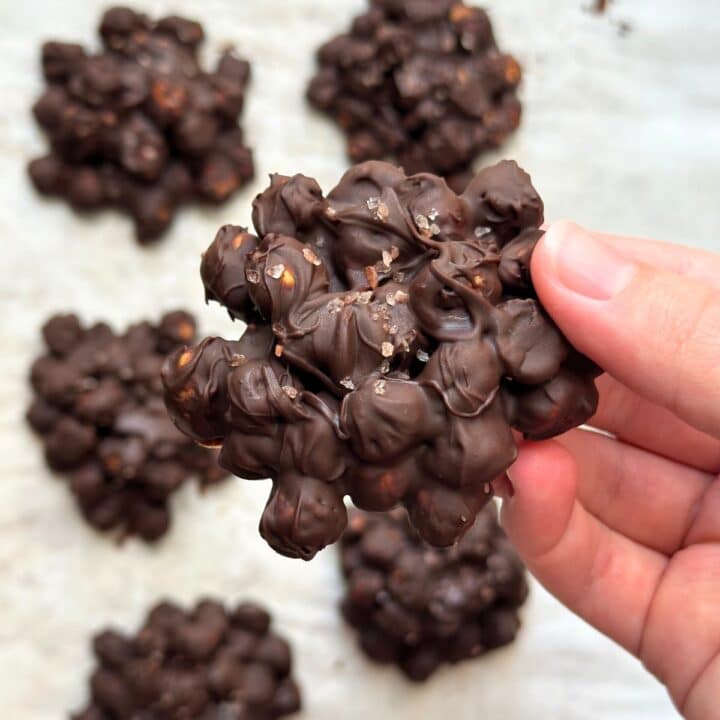
Joyce says
Sounds great! Any suggestions other than almond flour? Is there such a thing as cashew flour?
Maggie says
Hi Joyce! I have made this using sunflower seed flour and it works great! I have a sensitivity to almonds, so always try my recipes with both almond flour and sunflower seed flour. I have a tutorial on how to make your own nut and seed flours here: https://alternativedish.com/how-to-make-almond-flour-or-any-seed-or-nut-flour/
Judy says
I am going to try a quiche. Should I bake the crust before filling?
Maggie says
Hi Judy! Yes, bake it for about 8 minutes before adding the filling. Good luck!
Angie says
I can’t use coconut oil is there any other oil that will work also?
Maggie says
Hi Angie, you can use a vegan or regular butter. Let me know if you have any other questions!